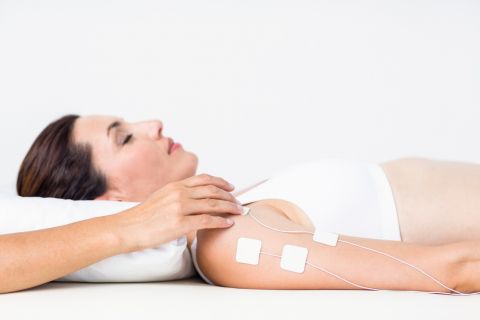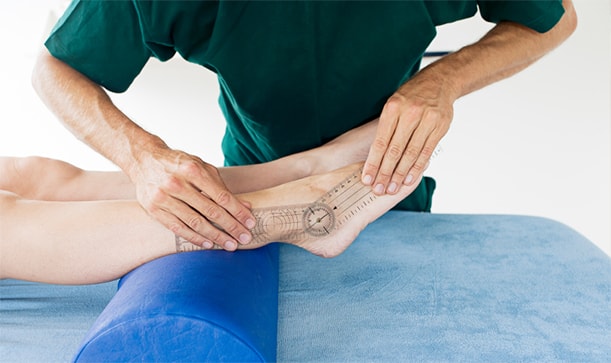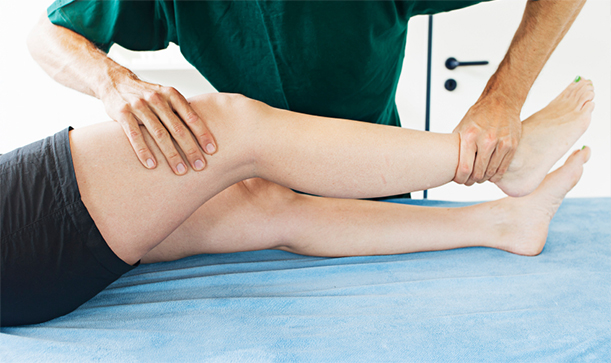CK Physiotherapy
AREAS COVERED
W7, W5, W13, Ealing, West London
57 Elthorne Avenue
Hanwell, W7 2JY
T: 020 8566 4113
M: 079 572 46185
E: info@ckphysio.co.uk
Location / Parking
We are situated in Hanwell, between Boston Manor Road and Northfields Avenue, south of the Uxbridge Road.57 Elthorne Avenue
Hanwell, W7 2JY
There are parking restrictions Mon - Fri 9-10am and 2-3pm. If you need a permit during this time please inform your therapist when you arrive. There are no parking restrictions at other times.
Opening Times
Please phone the number above during working hours to make an appointment. Our reception service will be happy to book your session.
London Underground / Bus Services
London Underground
10 min. walk from Boston Manor Tube Station.
15 min. walk from Northfields Tube Station.
Bus Service
E8, E3, E2, 207, 607, 83
Request Call Back
Our Blog
Comparison of Electrotherapy Methods To Alleviate Pain
By: BryanKelly (Psst, View author in Google Plus) Date: Aug 25th, 2021If it’s your first time going for a session of physiotherapy in London, don’t be surprised to see electrotherapy in your therapist’s list of services. It may sound terrifying, but actually, it’s a very safe procedure that is commonly used for pain relief treatments.

Electrotherapy Explained
In electrotherapy, electrical signals are released from the equipment and into the affected area specifically interfere with the transmission of signals for neural pain to the brain. With this interception, the patient can then experience pain relief.
The currents produced from the electrotherapy machine can also possibly facilitate the healing of damaged tissues. As helpful as it may be for various applications, though, it must be noted that the administration of electrotherapy must only be handled by a medical professional duly trained to handle the equipment.
Because it is basically facilitating the flow of electricity into the body, it is crucial that the therapy is conducted properly. The pads that will connect the machine to the body must avoid the heart area as this can cause cardiac arrhythmia. The throat should also be avoided because it can cause low blood pressure, as well as over a pregnant uterus as it can cause fetal damage.
How will I know what electrotherapy treatment is effective?
Electrotherapy treatment is an effective means of pain relief when the correct method is applied.
We will explore the different types of electrotherapy treatments available, the electrotherapy equipment used and how each treatment is an attributed pain relief method.
Plus, display the effectiveness of electrotherapy treatment when teamed with traditional physiotherapy treatment.
How is electrotherapy treatment used as a pain relief method?
All types of electrotherapy generate either a current, field or wave which passes through the skin. This penetrates your soft tissue, muscle and bone; which stimulates your nerves.
This stimulation acts as an effective pain relief method, by blocking the nerve signals carrying pain messages to your brain.
Muscle fibre activation and soft tissue activation through electrotherapy treatment helps to reduce swelling and increase strength and resistance; also attributing to effective pain relief.
Here are some of the benefits of electrotherapy treatment, but not limited to:
• Reduces body pain
• Alleviates nerve pain
• Accelerates healing of musculoskeletal injuries
• Increases blood circulation in the body
• Heals wounds
• Relaxes muscle spasms
Many electrotherapy treatments also aid in the stimulation and production of endorphins which are our natural pain relief hormones.
Combined with traditional physiotherapy treatment, and under strict guidance, pain relief medication may be significantly reduced or even stopped.
What types of electrotherapy treatment are used?
The main aim of electrotherapy treatment is to decrease pain, encourage healing and improve circulation. Yet some particular types of electrotherapy treatment are better suited to certain conditions, ailments and illnesses.
Below we have summarised the pros and cons of electrotherapy treatment types. Although there are many advantages of electrotherapy it’s important to also explore the disadvantages and risks of electrotherapy treatment too.
Transcutaneous electrical nerve stimulation (TENS)
|
Function: is a method of pain relief involving the use of a mild electrical current sent via electrodes attached to the skin. TENS (transcutaneous electrical nerve stimulation) - NHS (www.nhs.uk) |
|
|
Pros: Non-invasive procedure Drug-free pain relief and current medication can be reduced Can be used in your home Helps to release endorphins |
Cons: Being a professional device, it’s hard to find the best device on the market for home use Works best on localised pain rather than large areas Dependent on the individual but can take a few sessions to see results Sticky electrode pads may irritate the skin |
Percutaneous electrical nerve stimulation (PENS)
|
Function: A minimally invasive procedure that combines electroacupuncture with Transcutaneous electrical nerve stimulation (TENS). Using needle electrodes to stimulate peripheral sensory nerves in soft tissue. Percutaneous Electrical Nerve Stimulation (PENS) (tulsapain.com) |
|
|
Pros: Delivers current closer to the nerve Treats chronic musculoskeletal pain Drug-free pain relief and current medication can be reduced Stimulates nerves in soft tissue, easing muscle spasm |
Cons: Needle electrodes may cause bruising or bleeding Used if previous TENS treatment isn’t successful Sessions can be longer |
Electrical muscle stimulation (EMS)
|
Function: Causing muscle contraction by applying electrical currents directly to the skin, stimulating motor neurons to trigger a contraction and build strength. Pros and Cons of Electrical Muscle Stimulation – Joint Pain Clinic |
|
|
Pros: Passive exercise Used mainly for lower extremities Stimulates circulation Prevents muscle wasting Improves joint and muscle function |
Cons: Symptomatic therapy that temporarily reduces pain Some have experienced surface skin burns Concentrates on muscles rather than nerves |
Interferential current (IFC)
|
Function: Sends small amounts of electrical current through the skin to stimulate the tissues around an injured body part to promote pain relief and healing. |
|
|
Pros: Higher frequency passes easily through the skin Deeper muscle penetration with less discomfort Reduces pain relief due to inflammation, sprain, strain or joint problems |
Cons: Muscle soreness, swelling or bruising Varying tingling or pins & needles as current is delivered |
Pulsed electromagnetic field therapy (PEMF)
|
Function: A magnetic field is produced to induce a current passed through the soft tissue of the body, aiding cellular function, bone growth and fusion. PEMF- Benefits | Kure Spa & Wellness Center | Kure Organic Juice BAR (kure-spa.com) |
|
|
Pros: Stimulates body and mind Cell regeneration Reduces chronic pain and inflammation |
Cons: Treatment must be professionally administered |
Galvanic stimulation (GS)
|
Function: Applies direct current via electrodes for treatment of acute injuries and balance problems. |
|
|
Pros: Treat major tissue trauma Reduces swelling Alters blood flow |
Cons: Tissue damage (prolonged use) |
Though electrotherapy treatment is relatively safe with minimal side effects, there are instances when it should not be administered.
Note that electrotherapy treatment must not be used to patients they are:
• Pregnant
• Epileptic
• Have an electric implant
• Cardiovascular disease
• Have cancer
• Recently received radiotherapy
Also, there are exceptions when electrotherapy treatment can be received with the above conditions.
When to choose electrotherapy treatment as a pain relief method?
Like each electrotherapy treatment type, the use for each individual will vary greatly.
This is due to illness, ailment or injury sustained; plus being dependent on the individual’s response to treatment received.
Electrotherapy is effective in the treatment of (but not limited to):
• Strains/sprains
• Fractures and splints
• Back/neck pain
• Arthritis
• Plantar fascitis
• Tendonitis
• DOMS (delayed-onset muscle soreness)
• Stroke, Cerebral Palsy and Multiple Sclerosis patients
• Fibromyalgia
• Labour pain
• Tennis elbow
• Hip pain
• Carpal tunnel syndrome
How to choose the right electrotherapy treatment?
At CK Physio we understand that knowing which treatment to choose can be confusing.
Seeking a chartered physiotherapist such as our team at CK Physio is recommended. Allowing you to explore your options comfortably whilst extracting accurate knowledge from our physiotherapists.
We offer a range of physiotherapy treatments to accompany your electrotherapy treatment; carrying out an initial virtual consultation to complete a risk assessment before a face-to-face appointment. (which are now available following guidance from Public Health England (PHE) and the Chartered Society of Physiotherapy (CSP).
Electrotherapy treatment is a non-invasive, non-toxic, and non-addictive pain relief method. Contact us today to see what treatments are suitable for you.
Initially posted last 18 October 2016
Updated content as of 25 August 2021





